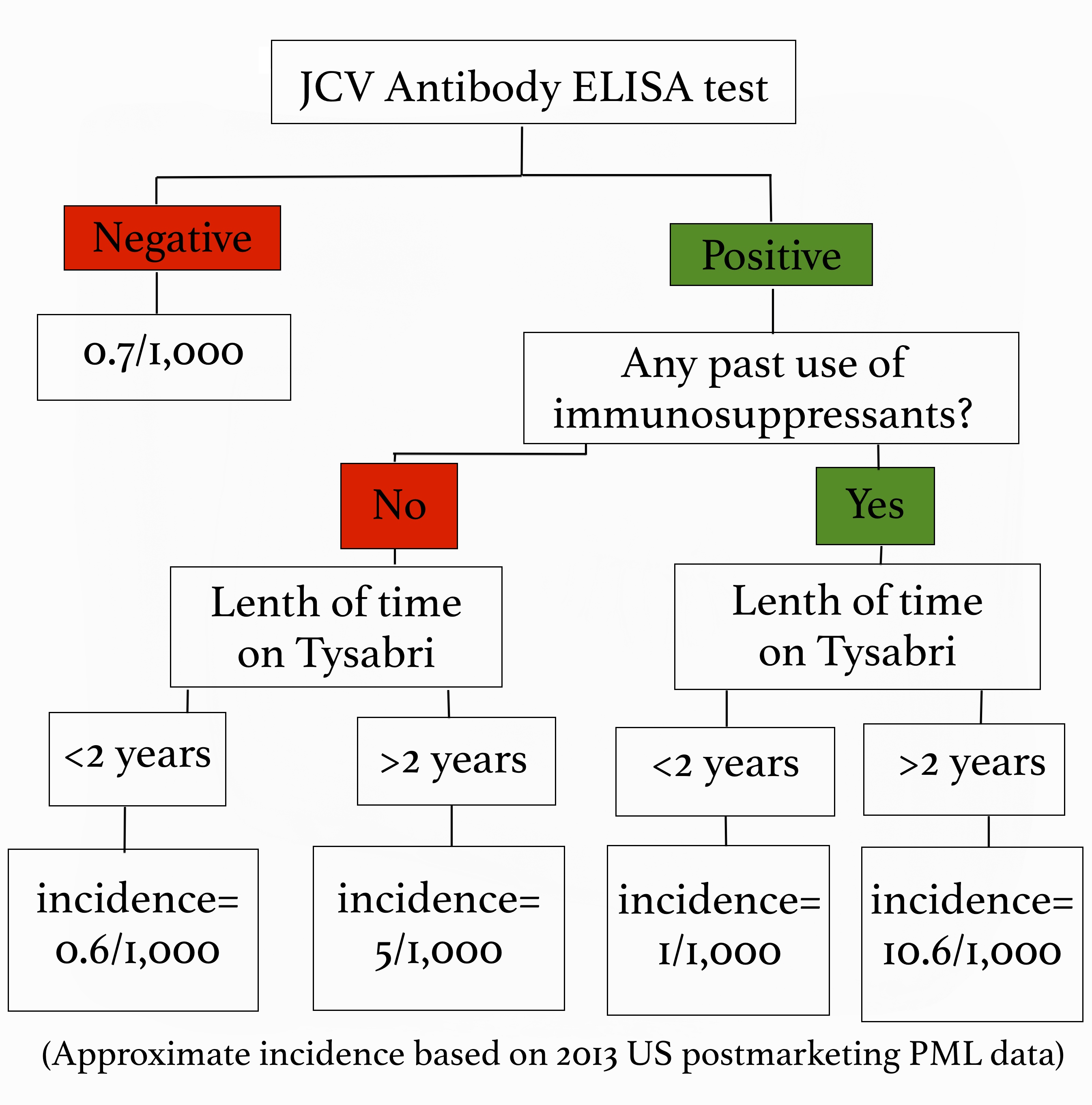Multiple Sclerosis 101: Understanding PML and the JC Virus
PML and the JC virus have been in the headlines a lot lately following the death of a person taking Tecfidera. Today, I want to focus on PML, the JC virus, and how it affects those of us with MS. This is obviously one of the scariest medication side effects for us, and it is very important to know what it is, its risk factors, and how it is detected.
What does PML stand for?
PML stands for progressive multifocal leukoencephalopathy. Okay, let's just stop right there and break down that mouthful!
- Progressive - steadily getting worse
- Multifocal - in many areas
- Leuko - white (in this case, referring to white matter in the brain)
- Encephalopathy - disorder or disease of the brain
So, before even reading anything else, you already know that this is a disease that afflicts multiple areas of white matter in the brain and that it gets worse over time. But what causes it?
What causes PML?
PML is in a category of infections called “opportunistic infections”. These are infections that generally pose no threat to a person with a normal immune system, but love to rear their ugly heads in people with weakened immune systems. They are most frequently seen in chemotherapy patients or people with HIV because they are severely immunocompromised. Although it is much rarer, they can also occur in people with MS who are on drugs that weaken their immune systems. You may already know that Tysabri poses the greatest risk for developing PML. However, PML developed in one person taking Gilenya, and one person taking Tecfidera recently died of complications from a PML infection.
How is the JC virus related to PML?
The JC virus (John Cunningham virus) is the infection that leads to PML. This virus behaves much like other common viral infections such as herpes and the chickenpox. When you get the chickenpox, the virus never leaves your body, and later in life, it may flare up again and cause a condition called shingles. Similarly, people who have been infected with herpes always have the virus lurking in their nervous systems. During times of stress, it will become active, and an outbreak of sores will occur, but unless an active outbreak is occurring, there are no outward signs of the virus.
Complications from the JC virus in the immunocompromised
The JC virus is fairly common and is passed easily from person to person. However, since it’s an opportunistic infection, healthy people never have any complications from it. When you introduce medications that weaken the immune system, as Tysabri does, your body no longer fights off viruses the way it used to. This gives the dormant JC virus the chance to become active. Once it is active, there is a chance that it can cross through the blood-brain barrier and cause PML. This causes severe damage to the white matter of the brain, and can even lead to death.
Testing for the JC virus
All of that information is fairly terrifying, right? Well, here’s some good news: we can easily test to see if you have been exposed to the JC virus, which tells us if you are at risk for developing PML. A blood test called the JCV Antibody ELISA test is routinely done on anyone thinking about going on Tysabri. If you test negative, meaning you don’t carry the JC virus, we continue to test for it every 6 months while you are taking Tysabri because you can be exposed to the virus at any time. If you do test positive, we also get an index value which gives us even more information about how likely you are to get PML.
Weighing the risks and benefits of starting Tysabri
A low index value indicates a very low risk, and a higher number indicates a greater risk. All that is to say that PML is by no means a common side effect. However, when it does happen, it is very serious, so we as providers aren’t willing to take any chances! During the first year of taking Tysabri, your risk is very low, but it increases after two years. Additionally, being treated with immunosuppressants in the past puts you at a higher risk for developing PML. We look at all of these risk factors and use that information to decide whether Tysabri is safe for you or not. The benefit of Tysabri is that it lowers relapse rates by 81% and disability progression by 64%, so we have to weigh its effectiveness against the relative risk of contracting PML, which I’ve summarized for you below:

Symptoms of PML
Because PML attacks the myelin, just like MS does, the symptoms should sound familiar. They include confusion, difficulty talking, weakness, memory loss, and loss of balance and coordination. If PML is suspected, an MRI of the brain will be done, and a lumbar puncture can confirm the diagnosis. PML is treated in the hospital, and the goal of therapy is to remove all traces of the virus from your body.1-6
Being informed of medication side effects
Picking medications is a very personal decision and should be discussed in detail with your neurologist. It is imperative to weigh the risks versus benefits very carefully and to understand the medications and their side effects. Being well informed is the first step to being your own best advocate!
Join the conversation